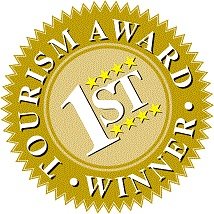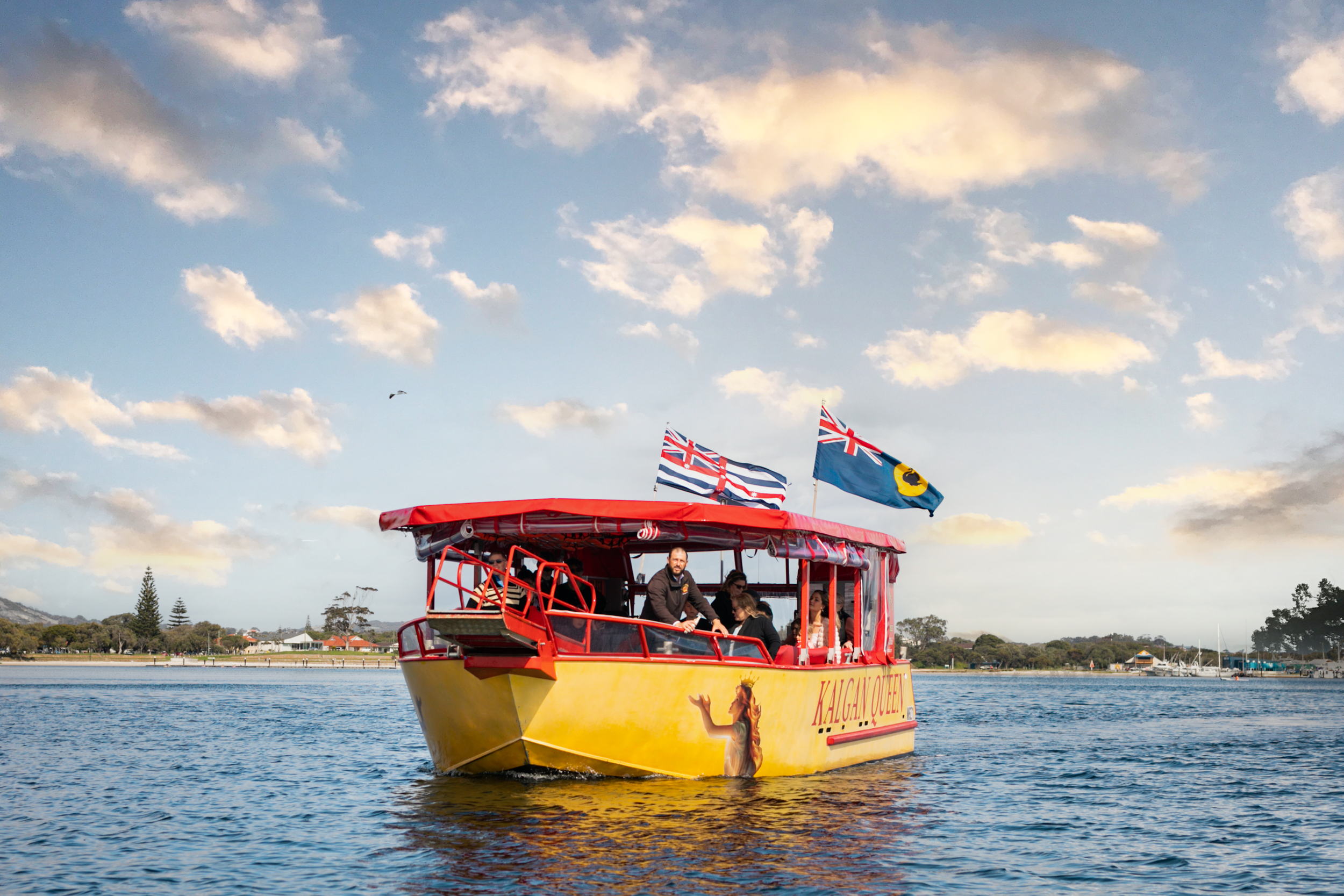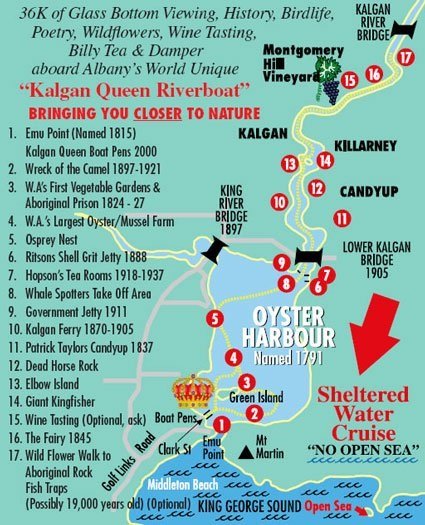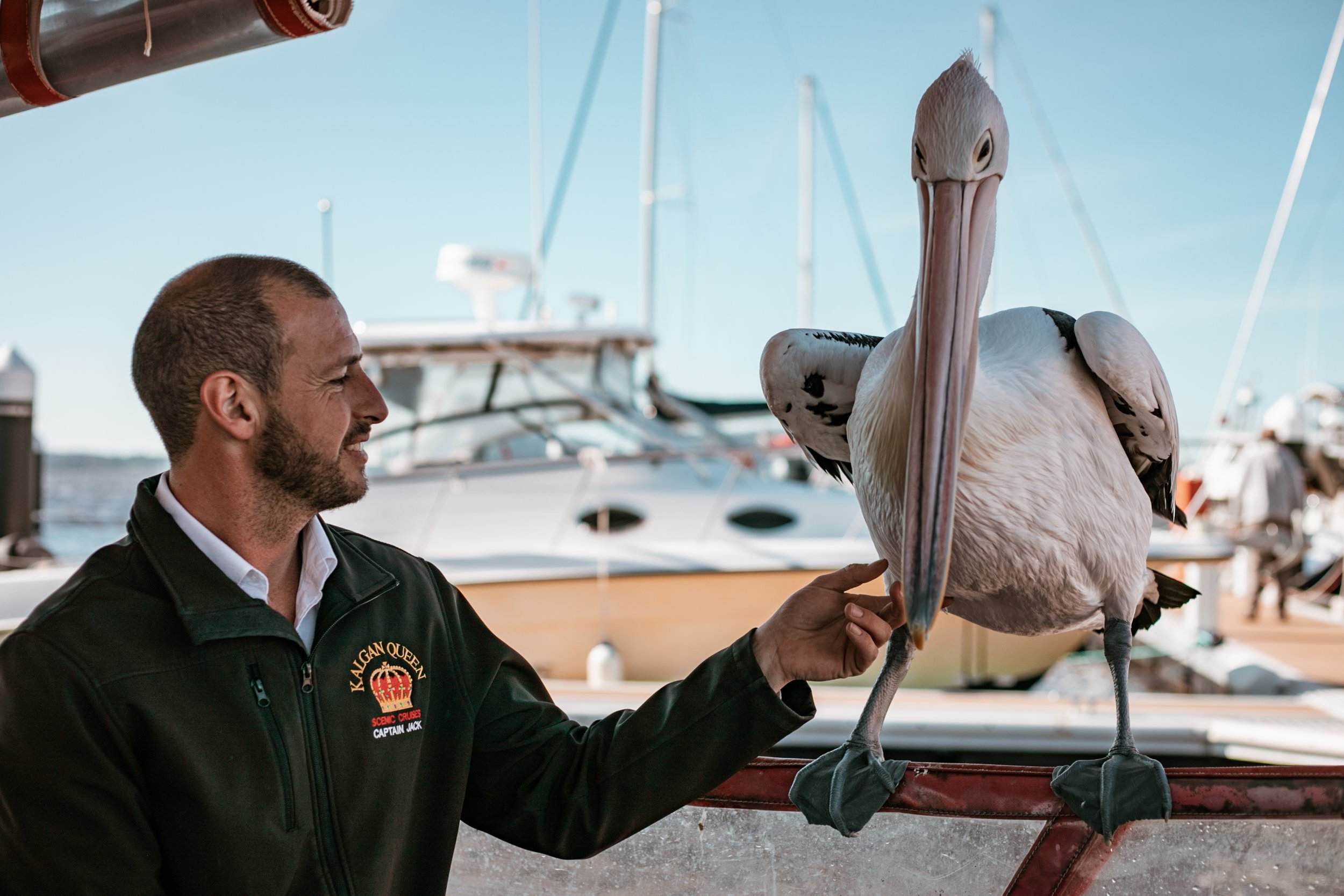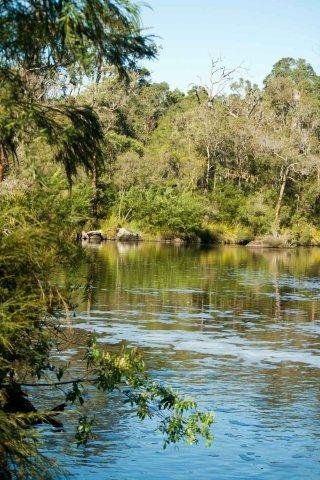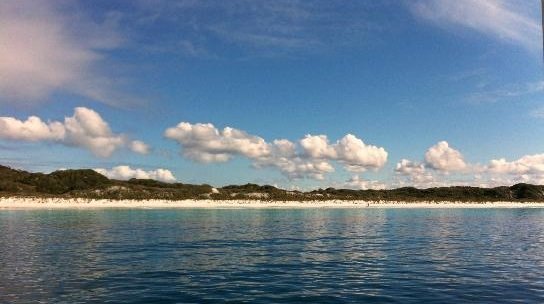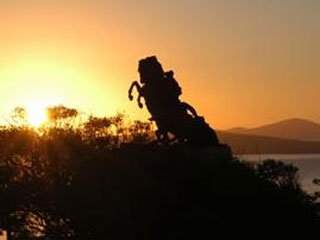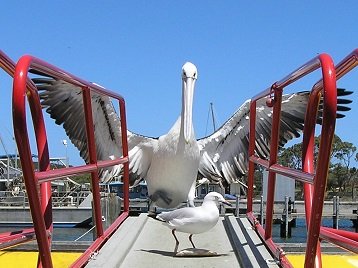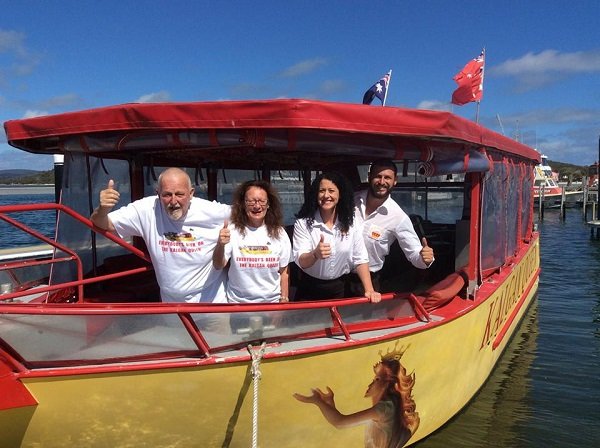Albany Boat Tours and Cruises Kalgan Queen Riverboat Cruise.
Albany Wildlife and Scenic Cruise
Albany is home to the award winning Kalgan Queen Riverboat trip which is a four hour sheltered water cruise that departs every day at 9am. You can learn more about Albany its history, dreamtime and wildlife than some people do in a life time. Taste local products which will change seasonally, that may include strawberrys, natural raw honey, oysters mussels straight from the harbour, weather permitting and hot savoury damper. Did I mention it's a fun boat trip?
Booking and information. 9844 3166 7am 7pm 7days. Thank you for booking direct, you will always get the best price but if you cant find the booking you require on our book now button ring us direct on 9844 3166 as we somtimes have a cancellation or put on a second cruise. When booking children 4 to 14, 15 and over is priced as a adult. COVID19 compliant, we care.
Please be my guest as I show you our cruise and introduce you to our wild life friends.
More than just a cruise…
…a journey through time.
KALGAN QUEEN CRUISES.
Cruise the sheltered waters of Oyster Harbour and the ancient Kalgan River. Like a journey through time you will take the path of the first settlers as they discovered the natural and stunning beauty of what became W.A.’s first settlement. Meet Percy the dancing Pelican, Sea Eagles and other wildlife very close to the boat, whilst watching Giant Rays through the boats glass bottom. You may see Kangaroos in the wild. Enjoy hot savoury damper with your billy tea and coffee. Taste local raw honey from the flowers of the Kalgan. There is a live, humerous yet comprehensive commentary which covers local poems, Aboriginal Dreamtime, history, the Anzac legend and so much more. This has to be the best thing to see and do as you will learn more about Albany in four hours than some people do in a lifetime
PRICES SHOWN ARE FOR DIRECT ..........BOOKINGS ONLY!
2023 Bookings Information: Call 08 9844 3166 7am til 7pm Adult fare $125.00 Aussie Senior $115.00 Children 4 to 14 $90 Family ticket 2 adults plus 2 children $360. For a full four hours. Thank you for booking direct! These discounts only apply by ringing direct or using the book now button below.
Oyster Harbour and Emu Point
Oyster Harbour is the most sheltered Harbour in Albany which is near Emu Point. This is where Kalgan Queen Riverboat, tours, cruises and Albany WA Australia. The Harbour is good for fishing, bird watching and wildlife and also home to one of only four places where Pelicans breed in WA.
The Kalgan River
The Kalgan River which flows into Oyster Harbour is one of the oldest Rivers in the World and home to the Kalgan Queen Riverboat. Many people believe its scenic beauty and wildlife far exceed the French Riviere des Fancaise after which it was named in 1803 by the French explorer, Nicholas Baudin.During the late nineteenth and early twentieth century’s the Albany served as a gateway to the Eastern Goldfields and for many years was Western Australia’s only deep water port, making it a place of importance for shipping services between the UK and its Australian colonies. The construction of Fremantle Harbour in 1893 saw its importance as a port decline. After which Albany industries turned primarily to agriculture and timber and, later, whaling and tourisum. Unlike Perth and Fremantle WA, Albany was a strong supporter of Federation in 1901.
Albany WA Beaches Coastline
and Attractions
Today Albany Australia is recognised as having the most scenic coastline in AustraliaTourists love the Kalgan Queen Riverboat trip and the Horse drawn Wagon tour are favourite Attractions. Albany WA is the top spot from which to explore the south west of the state and is recognised for its natural beauty and preservation of heritage. With the exception of the Esplanade Hotel. Albany WA is the oldest permanently settled town in Western Australia, predating Perth and Fremantle by some two years. Despite what the Tours in Perth tell you! Click ALBANY BEACHES for more infomation and pictures....
Albany Australia Home to Anzac Service
Albany Australia is the home of the Anzac legend, being the last port of call for troopships departing Australia in the First World War. Ships carrying the Australian Imperial Force and the New Zealand Expeditionary Force (later known collectively as Anzacs to Europe to join World War I gathered at Albany Australia in October 1914. They 38 ships departed in convoy on 1 November 1914. There were more than 30,000 troops with over 7500 horses.
Albany Australia home to ANZAC
Albany Australia home to ANZAC
The memorial to the Desert Mounted Corps is on top of Mount Clarence. The memorial consists of a statue of an Australian mounted soldier helping a New Zealand soldier whose horse has been wounded. There is a wall bearing the words "Lest We Forget". A dawn service was started in Albany Australia by a Church of England Priest Called the Reverend Arthur White Today several thousand people participate in this service each year.
In Herberton Nth Queensland there is a grave just marked. A Priest. Next to the grave a marker which reads, quote: - Adjacent to, and on the right of this marker, lies the grave of the late Reverend Arthur Ernest White, a Church of England clergyman and padre, 44th Battalion, First Australian Imperial Force.
On 25th April 1923, at Albany in Western Australia, the Reverend White led a party of friends in what was the first ever observance of a Dawn parade on ANZAC Day, thus establishing a tradition which has endured, Australia wide ever since.
Albany Australia Accommodation
You need to know where to stay and the choice is as varied as your needs and price range. But to help you with a good choice we have our special Albany Accommodation page, which covers, Beach accommodation, B&B, Caravan Park, Hotel Motel accommodation
follow us on Instagram: @KalganQueenAlbany
